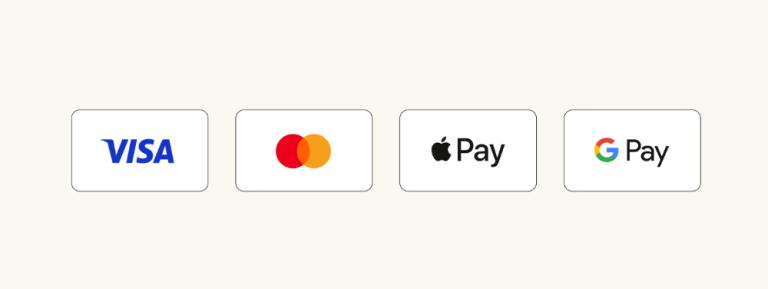Fees & FX That Reduce Return
This article explains how fx costs and transaction fees reduce the real value of players’ winnings at online casinos. It outlines the main expenses Australian players face during deposits and withdrawals and offers practical strategies to minimize fx costs and protect overall returns.
Avoiding FX Fees with AUD Payment Methods
| Fee Type | Typical Range | Annual Impact (Regular Player) |
|---|---|---|
| Currency Conversion | 1-5% | $200-400 |
| Exchange Rate Spread | 0.5-2% | $50-150 |
| Transaction Processing | $5-15 flat | $100-300 |
When Australian players engage with online casinos operating in foreign currencies, they often encounter an invisible tax on their gambling budget through currency conversion charges. These forex fx fee can range anywhere from 1% to 5% of each transaction, creating a significant drain on your bankroll over time. The spread between buy and sell rates adds another layer of cost, with financial institutions profiting from the difference between what they charge you for converting AUD to another currency versus what they pay themselves. For regular players depositing and withdrawing frequently, these charges accumulate quickly, potentially costing hundreds of dollars annually.
Local Currency Options for Australian Players
Australian-focused online casinos have increasingly recognized the value proposition of offering native AUD accounts, eliminating conversion headaches entirely for their target demographic. These platforms partner with local payment processors that specialize in domestic transactions, creating a streamlined experience where deposits and withdrawals occur in the currency players actually use in daily life. The absence of currency conversion means no unexpected deductions appear on bank statements, no fluctuating exchange rates affect your balance, and no commission charges reduce your available funds.
✅ Pros of AUD Casinos
- No conversion fees
- Transparent transactions
- Local banking support
- Faster withdrawals
- Better customer service
❌ Cons to Consider
- Fewer casino options
- Limited game selection
- Smaller bonuses sometimes
- Regional restrictions
- Less international tournaments
How FX Fees Affect Effective RTP
| Scenario | Advertised RTP | FX Fees | Effective RTP |
|---|---|---|---|
| High RTP Slots (No Fees) | 97% | 0% | 97% |
| With 4% Total Fees | 97% | 4% | 93.12% |
| With 7% Total Fees | 97% | 7% | 90.21% |
Return to Player percentages represent the theoretical long-term payout rate of casino games, but these published figures assume that 100% of your wagered amount actually reaches the game. When forex fx fees erode your bankroll before you even place a bet, your effective RTP decreases proportionally. A slot advertised with 96.5% RTP effectively pays out less when measured against your original AUD deposit after conversion charges reduce the funds available for wagering.
The mathematical impact becomes clearer through concrete examples. Suppose you deposit AUD 1,000 AUD into a casino operating in USD, and your payment method applies a 3% conversion penalty plus a 1% transaction charge, leaving you with AUD 960 equivalent in casino credits. If you play high RTP games with a 97% return rate, your expected long-term return on the original AUD 1,000 is actually 93.12% (97% of 96%), not the advertised 97%. This 3.88 percentage point reduction may seem modest, but it represents AUD 38.80 less returned on every AUD 1,000 cycled through the casino—a substantial decrease that compounds over extended play sessions.
Recommended AUD-Friendly Casinos
Identifying casinos that prioritize Australian players through comprehensive AUD support requires examining several factors beyond simply accepting the currency. The best platforms offer native AUD accounts where all transactions, balances, and game stakes display in Australian dollars. They partner with payment processors specializing in Australian banking infrastructure, ensuring deposits and withdrawals process efficiently without international banking complications. Customer support teams understand Australian banking practices, time zones, and relevant regulations, providing assistance during hours convenient for local players.
Hidden Fees in Instant Transfers
| Transfer Type | Speed | Base Fee | Hidden Costs |
|---|---|---|---|
| Bank Transfer | 3-5 days | $0-10 | Minimal |
| Instant E-wallet | Instant | 1-2% | 3-5% total |
| PayID | Minutes | $0-5 | None |
The convenience of instant payment methods comes at a cost that many players discover only after completing transactions. While traditional bank transfers might take three to five business days, instant alternatives promise immediate fund availability—a tempting proposition when you’re eager to start playing high RTP slots right away. However, this speed often carries premium pricing that significantly exceeds standard processing charges, sometimes reaching 5-7% of the transaction amount when combining all applicable deductions.
Payment processors offering instant transfers typically structure their pricing with multiple components that together create the total cost. A base transaction charge might appear reasonable at 1-2%, but additional charges for currency conversion (if applicable), expedited processing, and platform usage fees stack to create a substantially higher effective rate. Some services advertise “no fees” while building their profit into unfavorable exchange rates—a practice that obscures the true cost from casual inspection. The markup embedded in conversion rates often proves more expensive than transparent flat fees, yet players perceive it as costless because no separate line item identifies the deduction.
Understanding these overhead charges requires careful examination of payment confirmations, bank statements, and casino account records. The amount debited from your bank account may exceed the amount credited to your casino balance by a margin that represents the service’s total commission. For players making frequent deposits to capitalize on promotional offers or maintain consistent play across high RTP online slots, these charges accumulate rapidly. A player making ten AUD 100 deposits monthly at 4% total fees sacrifices AUD 40—enough to fund several hours of additional gameplay on pokies with favorable return rates.
Common Charges Overlooked by Players
- 📊 Platform fees from e-wallet providers
- 💱 Hidden exchange rate markups
- ⏱️ Expedited processing premiums
- 🔄 Two-step transaction costs
- 🏦 Bank-side international fees
Platform fees represent one of the most commonly overlooked deductions, particularly with e-wallet services that charge for both funding the wallet and transferring funds to the casino. Players might notice the casino doesn’t charge withdrawal fees but fail to recognize that the e-wallet provider deducts a percentage when converting casino credits back to their bank account. This two-step process creates dual opportunities for charges, with both transactions potentially carrying their own processing costs and exchange rate markups if currency conversion occurs at any stage.
Comparing Instant Transfer Methods
Different instant transfer technologies carry varying cost structures that significantly impact their value proposition for casino players. PayID through Australian banks offers near-instant transfers with minimal fees, as the service was designed to compete with international payment platforms by providing local players a cost-effective alternative. Transactions process through established banking infrastructure, maintaining security and reliability while eliminating currency conversion entirely when both parties operate in AUD. The settlement typically completes within minutes during banking hours, though overnight and weekend transactions may experience slight delays.
Minimizing Unexpected Deductions
Proactive strategies for reducing surprise fees begin with thorough research before selecting payment methods. Reading complete terms and conditions, though tedious, reveals the actual cost structure including all potential charges that might apply to your specific transaction patterns. Many payment providers maintain fee schedules on their websites, detailing exact percentages or flat fees for various transaction types. Comparing these published rates across multiple services identifies the most economical option for your typical deposit and withdrawal amounts.
Cashback Offsets vs Fees
Cashback promotions have become increasingly popular at online casinos, with platforms offering to return a percentage of losses to players as a loyalty incentive. These programs appear straightforward—receive back 5-10% of net losses weekly or monthly—but their actual value depends heavily on how they interact with transaction fees, wagering requirements, and withdrawal conditions. Understanding whether cashback genuinely compensates for the various charges you incur requires mathematical analysis that many players skip, potentially overvaluing these promotional benefits.

Calculating Net Gain After Fees and Cashback
Accurate calculation of your net position requires tracking all monetary flows in and out of your casino account over a defined period. Begin by totaling all deposits and noting the actual amount debited from your bank account, which may exceed the sum of casino credits received due to various fees. Calculate the total transaction charges paid, including currency conversion spread, processing fees, and any other deductions that reduced the amount available for play. This figure represents your total cost of access—the overhead required to Next, sum all withdrawals received back into your bank account and compare them to the amounts initiated from your casino balance. The difference represents withdrawal costs—processing fees, penalties, and any currency-related charges that reduced your actual receipt below the withdrawn amount. Add this to your deposit overhead for total transaction expenses. Finally, calculate any cashback, loyalty rewards, or other promotional credits received during the period. These promotional benefits offset some of your transaction costs, but only if you successfully converted them to withdrawable funds rather than losing them during mandatory wagering.
| Metric | Example Calculation |
| Total Deposited | AUD 1,000 |
| Deposit Fees (4%) | -AUD 40 |
| Casino Credits Received | AUD 960 |
| Wagered Amount | AUD 5,000 |
| 97% RTP Return | AUD 4,850 |
| Theoretical Loss | -AUD 150 |
| 10% Cashback Earned | +AUD 15 |
| Final Balance to Withdraw | AUD 825 |
| Withdrawal Fee (3%) | -AUD 24.75 |
| Net Amount Received | AUD 800.25 |
| True Loss vs Deposit | -AUD 199.75 (19.98%) |
When Cashback Covers Transaction Costs
The relationship between cashback percentages and transaction costs determines whether these promotions deliver real value. Ideal scenarios involve regular players who maintain consistent activity levels, triggering meaningful cashback amounts while spreading fixed transaction costs across larger volumes. When you deposit AUD 2,000 monthly and play through AUD 10,000 in wagers at 97% RTP, you theoretically lose AUD 300, earning AUD 30 cashback at 10%. This AUD 30 partially offsets the combined deposit and withdrawal fees, though rarely covers them completely unless using highly efficient payment methods.
✅ Good Cashback Deals
- 15%+ cashback rates
- Daily/weekly payouts
- No wagering requirements
- All games eligible
- Instant credit to account
❌ Poor Cashback Terms
- Under 5% rates
- Monthly calculation only
- High wagering (20x+)
- Slots excluded
- Maximum caps applied
Break-even analysis reveals the minimum activity level where cashback benefits exceed transaction costs. This calculation varies by individual circumstances, but general guidelines emerge from typical scenarios. Players depositing less than AUD 500 monthly rarely generate enough cashback to offset even modest 2% transaction fees. Medium-volume players depositing AUD 1,000-2,000 monthly begin approaching break-even with 10% cashback programs and efficient payment methods. High-volume players exceeding AUD 5,000 monthly deposits almost always benefit from cashback programs, as their earned rewards dwarf reasonable transaction costs.
Optimizing Deposit Amounts for Efficiency
Strategic deposit sizing maximizes the efficiency of both transaction fee economics and cashback earnings. Rather than making frequent small deposits that each incur flat fees, consolidating funds into larger, less frequent transactions reduces the percentage cost significantly. A single AUD 1,000 deposit paying AUD 15 in fees represents 1.5% overhead, while ten AUD 100 deposits each paying AUD 5 fees total AUD 50—a 5% cost that devastates your effective returns. This consolidation strategy requires disciplined bankroll management and the self-control to avoid depleting large balances through tilt or poor decision-making.
| Deposit Strategy | Monthly Total | Total Fees | Fee % |
|---|---|---|---|
| Daily $50 deposits | $1,500 | $150 | 10% |
| Weekly $350 deposits | $1,400 | $40 | 2.9% |
| Monthly $1,500 deposit | $1,500 | $15 | 1% |
Psychological factors complicate optimal deposit strategies, as larger balances create temptations for extended sessions that deviate from planned betting patterns. Successful implementation requires treating casino balances as allocated entertainment budgets rather than available funds, maintaining strict session limits regardless of balance size. Some players find success dividing large deposits into mental “sub-accounts” designated for specific days or weeks, though this requires significant discipline to respect self-imposed boundaries without platform-enforced restrictions.
Timing deposits around promotional periods multiplies their efficiency by stacking bonuses with cashback earnings. Many casinos offer reload bonuses on specific days, reduced withdrawal fees during happy hours, or enhanced cashback rates for VIP tiers. Coordinating deposits to coincide with multiple overlapping promotions extracts maximum value from each transaction’s fixed costs. A AUD 1,000 deposit earning a 50% reload bonus, qualifying for 15% weekend cashback rates, and processed through a fee-free promotional window delivers substantially better economics than the same deposit made without strategic timing.
Withdrawal timing equally impacts overall efficiency, though psychological factors often override mathematical optimization. The temptation to immediately cash out any profit conflicts with the reality that small withdrawals carry disproportionate percentage fees. Establishing predetermined withdrawal thresholds based on fee structures rather than emotional impulses maintains disciplined, cost-effective cash flow management. Common thresholds include:
- Minimum AUD 500 for flat AUD 10 fees (2% cost)
- Minimum AUD 1,000 for percentage-based fees over 1%
- Weekly scheduled withdrawals regardless of amount to maintain routine
- Immediate withdrawal of amounts exceeding 3x average deposit
- Take advantage of monthly free withdrawal offers for your largest cashouts
The optimal strategy varies based on your playing patterns, average transaction sizes, and the specific fee structures of your chosen casino and payment methods, requiring periodic reassessment as these factors evolve.
Fee Impact on Small Withdrawals
| Withdrawal Amount | $5 Flat Fee | $10 Flat Fee | Impact Level |
|---|---|---|---|
| $50 | 10% | 20% | ❌ Devastating |
| $100 | 5% | 10% | ⚠️ Significant |
| $250 | 2% | 4% | 📊 Moderate |
| $500 | 1% | 2% | ✅ Acceptable |
Small withdrawals face disproportionately severe penalty from transaction fees due to the prevalence of flat charges that consume a much larger percentage of modest amounts. A AUD 5 withdrawal fee represents 10% of an AUD 50 cashout but only 1% of an AUD 500 withdrawal—this mathematical reality makes small withdrawals economically devastating to your returns. Players experiencing modest wins on high RTP online pokies often face the choice between leaving funds in their casino account with the risk of losing them to continued play, or accepting substantial percentage losses to transaction charges.
Why Micro Withdrawals May Be Uneconomical
Withdrawing small amounts fails economic logic when transaction costs consume 10% or more of the total, as this effectively reduces your realized RTP far below the game’s theoretical rate. If you grind through AUD 500 in wagers on 96% RTP slots, you might reasonably expect to finish with around AUD 480—a AUD 20 loss. But if you then withdraw this amount and pay AUD 15 in fees, your actual return becomes AUD 465 on your original AUD 500 bankroll, representing a 93% effective RTP despite playing games with much better published rates. The fee penalty overwhelms the game’s favorable mathematics.
Micro withdrawals also trigger administrative overhead for both casinos and payment processors, which explains why many platforms actively discourage this behavior through punitive fee structures. Processing a AUD 25 withdrawal requires the same backend procedures, verification steps, and banking transactions as processing a AUD 2,500 withdrawal, but generates far less revenue for the platform. The fees charged for small withdrawals partially offset this economic imbalance, though they shift the cost burden entirely to players rather than being absorbed as a business expense.
Alternative approaches to accessing small winnings include:
- Leaving funds in the casino account until accumulating larger balances worth withdrawing
- Requesting casino chips or vouchers where available as intermediary storage
- Using cryptocurrency for small withdrawals where network fees are minimal
- Playing the balance forward with strict loss limits to protect the principal
- Waiting for promotional periods offering reduced or waived withdrawal fees
Each approach carries tradeoffs between accessibility, cost, and risk that individual players must evaluate based on their financial situation and self-control with available balances.
Minimum Thresholds to Avoid Fees
Identifying the break-even point where withdrawal fees become acceptable requires simple percentage calculations that dramatically impact your long-term results. As a general guideline, keeping transaction costs below 2% of the withdrawal amount maintains reasonable economics while providing regular access to winnings. This 2% threshold means setting minimum withdrawals at AUD 500 for a AUD 10 flat fee, or AUD 250 for a AUD 5 charge. While these amounts may seem large for casual players, the mathematical advantage of crossing these thresholds justifies patience in accumulating winnings before cashing out.
Some casinos implement their own minimum withdrawal amounts, typically ranging from AUD 20 to AUD 100, which forces all players above this baseline regardless of their preferred patterns. These minimums actually benefit players by preventing economically catastrophic micro-withdrawals, though they reduce flexibility for those who might want to cash out smaller amounts despite the cost. Interestingly, casinos with higher minimum withdrawals often pair these requirements with more favorable fee structures above the threshold, recognizing that players committing to larger cashouts represent more valuable customers worth retaining through better economics.
Planning Small Wins for Maximum Value
Strategic planning around small wins begins during the deposit phase, where you determine an appropriate session bankroll that accounts for realistic winning scenarios. Rather than depositing AUD 50 and hoping to run it to AUD 500—a scenario requiring exceptional variance—consider depositing amounts that, when doubled or tripled through fortunate sessions on high RTP games, produce balances that exceed economical withdrawal thresholds. A AUD 200 deposit that grows to AUD 400 creates a withdrawal amount where fees consume less percentage value.
Session planning that accounts for natural variance prevents premature cashouts that incur unnecessary fees. Understanding that short-term results on even the highest RTP slots fluctuate wildly helps set realistic expectations about when you’ve achieved a meaningful win worth withdrawing. A AUD 30 profit on a AUD 100 session represents good fortune, but may not justify immediate withdrawal if fees would consume a significant portion. Instead, pocketing this win mentally while continuing play with strict stop-loss limits protects the gain while allowing opportunities to grow it to an amount worth extracting.
Bankroll management techniques specifically designed around fee minimization include:
- Setting profit targets at 2-3x your deposit amount before considering withdrawal
- Using the “thirds” rule—withdraw only when your balance exceeds triple your deposit
- Designating certain accounts as “accumulation accounts” where small wins collect until reaching threshold
- Treating casino balances below AUD 300-500 as “active bankroll” not eligible for withdrawal
- Scheduling monthly or quarterly withdrawals regardless of amount to extract value periodically
These approaches require discipline and honest assessment of your self-control around available balances, but for players who can maintain boundaries, they dramatically reduce the percentage of winnings lost to transaction overhead.









